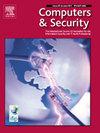增强容器化服务中的入侵检测:评估机器学习模型和系统调用数据的高级表示
IF 4.8
2区 计算机科学
Q1 COMPUTER SCIENCE, INFORMATION SYSTEMS
引用次数: 0
摘要
安全是现代数字系统最关键的要求之一。随着范式从试图开发完全安全的系统转变为设计检测、响应攻击并从攻击中恢复的弹性策略,入侵检测系统(IDS)变得不可或缺。然而,开发强大的IDS来应对复杂的攻击,特别是在云服务、物联网、边缘计算和微服务等场景中,仍然是一个重大挑战。其中,容器化服务由于其体系结构、部署方法和对共享资源的依赖而呈现出独特的安全挑战。另一方面,机器学习(ML)提供了有前途但尚未完全理解的解决方案,以实现自动化,可扩展和自适应的入侵检测机制。在本文中,我们通过在系统调用数据(入侵检测中常用的数据类型)上训练和测试各种ML算法,研究了基于ML的方法在容器化服务中增强入侵检测的适用性。此外,我们提出了一种新的基于图的系统调用表示,它保留了系统调用之间的关键关系和上下文信息。通过这种改进的表示,我们实现了入侵检测性能的增强,包括测试漏洞的检测率至少提高了193%,同时将假警报保持在更安全的阈值,低于0.4%的平均值,以最大限度地提高攻击识别,同时最大限度地减少假警报。我们还使用滑动窗口技术合并了后处理阶段。这项工作不仅解决了保护容器化环境的挑战,还为利用机器学习构建下一代IDS提供了一个强大的框架。本文章由计算机程序翻译,如有差异,请以英文原文为准。
Enhancing intrusion detection in containerized services: Assessing machine learning models and an advanced representation for system call data
Security is one of the most critical requirements for modern digital systems. As the paradigm shifts from attempting to develop fully secure systems to designing resilient strategies that detect, respond to, and recover from attacks, Intrusion Detection Systems (IDS) become indispensable. However, developing robust IDS that address sophisticated attacks—especially in scenarios such as Cloud services, IoT, edge computing, and microservices, remains a significant challenge. Among these, containerized services present unique security challenges due to their architecture, deployment methods, and reliance on shared resources. On the other hand, Machine Learning (ML) offers promising, but not yet fully understood, solutions to enable automated, scalable, and adaptive intrusion detection mechanisms. In this paper, we study the applicability of a ML-based approach to enhance intrusion detection in containerized services by training and testing various ML algorithms on system call data, a commonly used data type in intrusion detection. Furthermore, we propose a novel graph-based representation for system calls that preserves critical relationships and contextual information between system calls. With this improved representation, we achieve enhancements in intrusion detection performance, including an increase in detection rates by at least 193% for the tested vulnerabilities while maintaining false alarms at a safer threshold, below a mean of 0.4% to maximize attack identification while minimizing false alarms we also incorporate a post-processing phase using a sliding window technique. This work not only addresses the challenges of securing containerized environments but also provides a robust framework for leveraging machine learning to build next-generation IDS.
求助全文
通过发布文献求助,成功后即可免费获取论文全文。
去求助
来源期刊

Computers & Security
工程技术-计算机:信息系统
CiteScore
12.40
自引率
7.10%
发文量
365
审稿时长
10.7 months
期刊介绍:
Computers & Security is the most respected technical journal in the IT security field. With its high-profile editorial board and informative regular features and columns, the journal is essential reading for IT security professionals around the world.
Computers & Security provides you with a unique blend of leading edge research and sound practical management advice. It is aimed at the professional involved with computer security, audit, control and data integrity in all sectors - industry, commerce and academia. Recognized worldwide as THE primary source of reference for applied research and technical expertise it is your first step to fully secure systems.
 求助内容:
求助内容: 应助结果提醒方式:
应助结果提醒方式:


